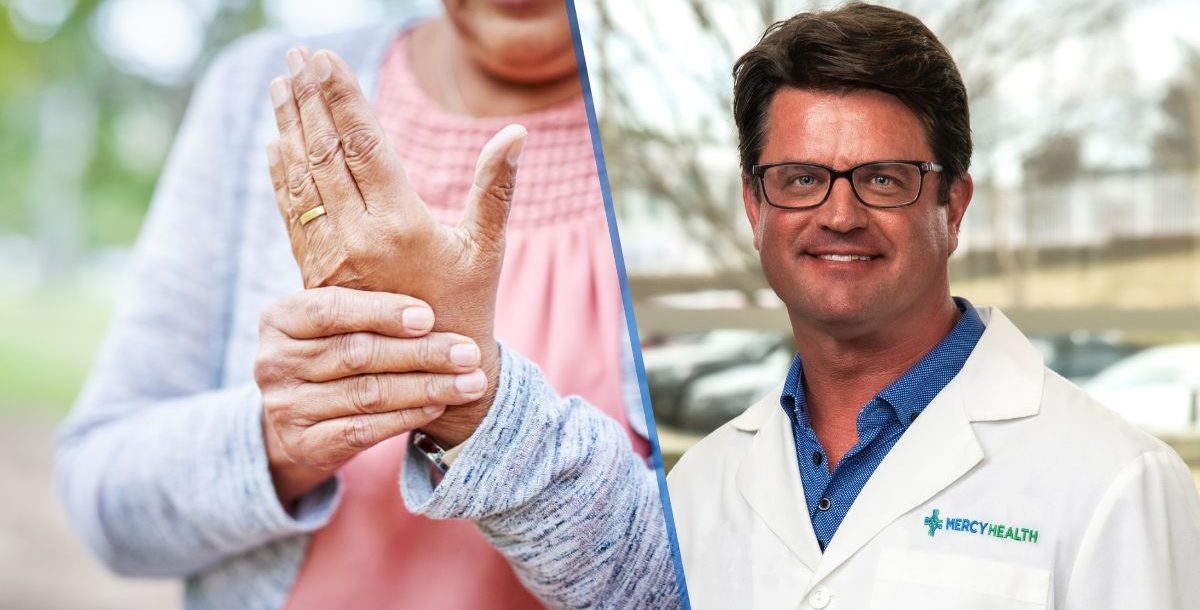If you have weak bones, you may not know it until you fracture or break one. This condition, called osteoporosis, is often a “silent” disease because it develops slowly over time and often without symptoms. However, osteoporosis prevention is possible to avoid serious injury.
While women who smoke and are over age 50 are at the greatest risk, there are many risk factors for osteoporosis. Brian S. Kern, MD, orthopedic surgeon at Mercy Health – Western Kentucky Orthopedics, discusses osteoporosis prevention and its risk factors.
What is osteoporosis?
Osteoporosis, which means “porous bone,” is a bone disease that can occur when the body loses too much bone, does not make enough bone or both. When this occurs, your bones become weak and may break easily. In severe cases, even sneezing could cause a bone fracture.
What are the risk factors for osteoporosis?
The primary risk factors for developing osteoporosis include:
- Age: People over the age of 50 are most likely to develop osteoporosis
- Sex: Women are at higher risk of developing osteoporosis, especially post-menopausal women
- Smoking: Current smokers and those who ingest secondhand smoke are more likely to develop osteoporosis
- Fracture history: If you’ve had a bone fracture as an adult or a family member (first-degree relative) has a history of fractures, you could be at higher risk
- Low body weight: People less than 127 pounds or with a BMI of less than 21 are more likely to develop osteoporosis
- Corticosteroid therapy: Using oral steroids (corticosteroid therapy) for more than three months increases the risk of developing osteoporosis later in life
- Estrogen deficiency: Low hormone levels and few menstrual cycles can lead to bone loss and osteoporosis
Is osteoporosis prevention possible?
Osteoporosis can be a serious condition that can interfere with your ability to do day-to-day activities. The good news is that osteoporosis prevention can begin when you’re young. This can help you slow it’s progression or stop it from developing entirely.
Get enough calcium and vitamin D
Calcium is a mineral that’s essential for building and maintaining strong bones. If your body doesn’t get enough calcium, it takes it from your bones, which can weaken them over time. Adults under 50 need about 1,000 mg of calcium daily, while those over 50 need 1,200 mg. Most adults need 600 to 800 IU of vitamin D daily.
Eat a nutritious, balanced diet that is rich in both calcium and vitamin D. Incorporate foods such as milk, yogurt, cheese, beans, fatty fish, egg yolks, dark leafy greens and fiber into your diet. Limit refined sugars when possible.
You can also get vitamin D from the sun. Just 10 to 30 minutes a few times a week is enough. Just don’t forget to wear sunscreen. Your doctor might suggest a supplement if you don’t get enough vitamin D through food or sunlight.
Weight-bearing exercise
Exercise is one of the best ways to maintain strong bones. Weight-bearing exercises like walking, jogging, dancing, hiking and strength training put stress on your bones in a good way. This stress stimulates your bones to get stronger and denser.
As little as 15 minutes a day helps, but 30 minutes most days of the week is better. If you’ve never exercised or haven’t been active in a while, start slow and gradually increase the intensity.
Avoid smoking and limit alcohol
Both smoking and excessive alcohol consumption can increase the risk of osteoporosis. Smoking and secondhand smoke reduce blood flow to your bones, while alcohol can interfere with the balance of calcium in your body. It can also lower estrogen levels in the body. With lower estrogen levels, bones absorb less calcium.
Alcohol can drain calcium from the bones. Even as little as two to three ounces of alcohol can negatively impact the bones. Aim to limit alcohol to no more than one drink per day for women and two drinks per day for men.
Get regular bone density tests
Those at higher risk of osteoporosis – postmenopausal women or individuals with a family history of the disease – getting regular bone density tests can help catch osteoporosis early. These tests measure the strength of your bones and help doctors determine if you need to take preventive action.
Consult with your health care provider about bone density tests. Early detection and intervention can significantly improve the management of the condition.
Maintain a healthy weight and diet
Being underweight increases the risk of osteoporosis, as bones don’t get enough support. Conversely, being overweight can also be a problem, as excess weight can stress the bones, especially the joints.
Also, too high salt intake can cause calcium loss in urine, and too much protein can cause calcium loss. Your body needs two to four ounces of lean protein each day.
Reduce stress
Excessive stress can raise cortisol levels, which leads to bone loss. If you’re at risk of developing osteoporosis, prioritize activities that help lower your stress levels.
Limit caffeine and carbonation
Limit or eliminate caffeine and carbonated beverages from your diet. Caffeine can interfere with calcium absorption. While you don’t have to cut them out completely, it’s important to enjoy them in moderation.
Fall prevention
Taking measures to prevent falls is crucial, especially for older adults. Keep your home well-lit, remove hazards like loose rugs and consider using assistive devices if necessary.
How we can help
Do you think you or a loved one is at risk for developing osteoporosis? You can start with your primary care physician, or if you’re experiencing symptoms of bone density loss, reach out to an orthopedic specialist with guidance for osteoporosis prevention.
Learn about the orthopedic and sports medicine services we offer at Mercy Health.






